

Suunto Blog
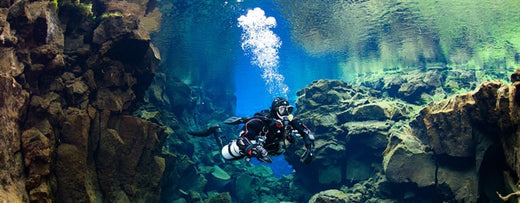
UNDERWATER EXPLORER
“Some people are repelled by the darkness of an underwater cave, but for me it’s an invitation into the unknown,” says Suunto Ambassador Jill Heinerth. Heinerth is a pioneering underwater explorer and filmmaker, leading technical diver, and world expert in rebreather technology.
Her love of the water began as a child and has persisted ever since. As a teen, Jill Heinerth was a volunteer swim instructor and lifeguard at her local swimming pool. Jacques Cousteau was her hero and by the age of 16 she was scuba diving.
Now, after more than a 20-year career, the Canadian underwater explorer and award-winning filmmaker has crossed the globe, diving in what she calls ‘the veins of mother earth’. Jill has dived deeper into the planet than any woman in history and seen some extraordinary places. She’s dived caves underneath the remote Ural mountains of Siberia, tickled the bellies of manatees near the Gulf of Mexico and explored sacred desert springs in Africa. In 2000, she was involved in one of her most ambitious projects to date — to dive inside a giant iceberg. In 2014 she was awarded the inaugural Sir Christopher Ondaatje Medal for Exploration by the Royal Canadian Geographical Society.
Jill is also a journalist and champion for women divers. She wrote a book called Women Underwater and in 2016 is part of a team of 10 women on an epic three-month journey, snorkeling more than 3000 km through frigid Arctic seas. “Some would suggest that exploration on this planet is done, but I disagree,” says Heinerth. “We know more about space than we do about our oceans and our underwater caves.”
Her abiding love of the ocean and watery places has also transformed her into a strong advocate for water conservation and protection, via her We Are Water Project. This important cause aims to raise awareness about global water issues, and encourage people to do more to protect our fresh water resources. Jill cycled across Canada, raising awareness along the way. With the same goal in mind, she wrote a fun children’s book about an itchy manatee that has an important message about water pollution.
Naturally, Suunto is the first choice of dive computer for Heinerth: “I’ve been using Suunto for a long time, and I think they represent the pinnacle of fine quality. The precise instruments and the ruggedness of the equipment have served me very well in some extreme diving expeditions over the years.”
She adds: “The Suunto DX is the key support device that serves as a backup for my rebreather. It’s easy to integrate it into a CCR dive plan, or any plan for that matter – open circuit or closed circuit. It also contains a very accurate digital compass, which I use to survey and make maps of new exploration.”
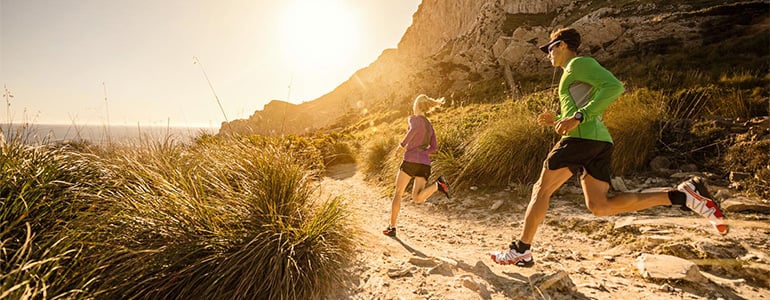
Become a better runner now!
If you would like to improve your running performance, now's the time. Suunto's current How do I run? contest offers you the chance to have your running form analyzed by professional coaches – for free! Whoever shares a clip of themselves running on Instagram and receives an analysis from the coaches goes in a draw to win one of six Suunto Ambit3 Run watches.
So far Carmichael Training Systems coaches Jason Koop and Nick White have analyzed five clips runners have shared on Instagram for the contest. Koop, as he's known in the running world, and Nick offered each runner useful feedback to help him or her make positive changes to their running technique. Watch each of the five clips below and read the feedback given.
Get involved with the How do I run? contest here
To help runners improve their performance, Suunto has also released new features to its Ambit3 watches. The new features were developed in cooperation with Firstbeat Technologies, Suunto’s long term partner in sports sciences, and include running performance level, sleep recovery and quick recovery test functions. Read more about the new features here.
Feedback from the coaches
Click here to read Koop and Nick's 8 general tips to become a better runner
I'm training for my first marathon Salisbury Trail 54321 and would be happy to get some advice about technique @suunto And this video is at our college's field where I usually do speed work #SuuntoRun #running #run
A video posted by Julia A. Russia🇷🇺/Suomi (@asandj) on Jun 30, 2015 at 8:17am PDT
Feedback from Koop: Your overall posture is quite good. You have a slightly forward lean and good head position. Don't change anything there! Your footstrike is slightly forward of your hips. If you focus on your foot striking the ground directly beneath your hips you will be more economical and save some wear and tear on your joints!
#suuntorun
A video posted by Simon Beaulieu (@simonbeaulieu73) on Jul 1, 2015 at 1:30pm PDT
Feedback from Nick: Your body position and footstrike are very good already. Upright body position with a slight forward lean, and your feet are landing midfoot directly beneath your hips. However, your speed would improve with some additional flexibility in your hips, pelvis, and legs. If you are more flexible all around, you'll be able to safely increase your stride length while maintaining your current footstrike. A good stretching or yoga class might be just the thing to get you running faster!
Been spending a lot of time on the track. It's sure paying off on the trails! #speedwork #SuuntoRun #Suunto #runordie #track #trailrunning @suunto
A video posted by Rory Scheffer (@roryscheffer) on Jun 25, 2015 at 10:00am PDT
Feedback from Koop: Looks like some nice speedwork! At these speeds, focus on having a footstrike that is directly under your hips and where your foot is hitting the ground on the midfoot or forefoot. While your flight phase (in air) posture and mechanics are quite good, if you simply focus on changing where and how your foot hits the ground, you will have less stress on your body.
Quick after work run. How is my style looking @suunto? #suuntorun #running #howdoirun
A video posted by Beartastic (@richfrombeartastic) on Jul 2, 2015 at 4:44am PDT
Feedback from Nick: Looks like a great path to put in an after-work run! You would definitely benefit from shortening up your stride slightly, and getting your feet to contact the ground directly beneath your hips. Right now you're landing on your heels just before the rest of your foot, and slightly in front of your center of mass/hips. This results in a "braking" action. Your running will be much more efficient if you can bring that foot strike backwards 6" or so. In the short term that might feel like you're shortening your stride, but in reality you'll just be getting more efficiency out of your effort, and faster overall!
Hey @suunto, analyze my run! #suuntorun #suunto #running #fitness #coaching #technique
A video posted by Josh Gale (@joshagale) on Jul 2, 2015 at 4:37am PDT
Feedback from Koop: Turnover is the key here! Your foot strike and mechanics are very good and I would not change a thing here. However, your running cadence needs to be 10 strides per minute higher. You can correct this by counting the number of strides you take (one foot landing on the ground) for 15 seconds. Multiply by 4 and you should be in the 90 strides per min range. You can also use your Suunto watch to track this metric!
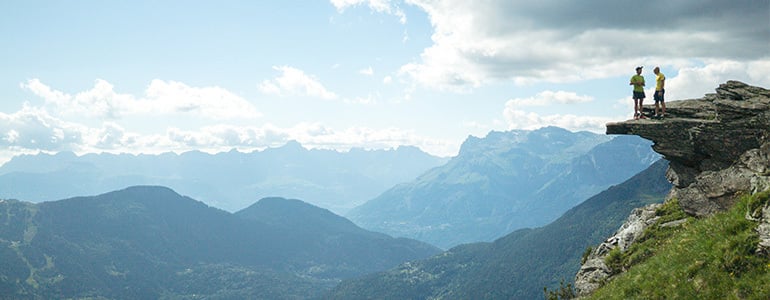
Karl meets Kilian
It’s not everyday that an athlete helps someone break his own records, but then Kilian Jornet is not your regular athlete. He belongs to the spirit of the mountains, where comradeship and camaraderie count more than rivalry and competition.
So when he was contacted by Karl Egloff, a runner who’s broken his speed ascent records on Aconcagua and Kilimanjaro and was looking to meet up, Kilian’s response was, ‘great idea’!
Hit play to see these two mountain athletes meet up for the first time.
© Montaz-Rosset Film “Nothing was set-up,” says the film maker Seb Montaz. “It was really the first time they met. They were both excited to meet and I hope people see them laughing together – there was no rivalry.”
The 34-year-old from Ecuador was in Chamonix with ambitions to break Kilian’s 4h 57m speed record on Mt Blanc. As it happened the attempt was called off as conditions were not ideal but it proved to be a good experience for Karl.
“It was amazing,” he says. “It was really nice to climb with him. We went for a training run and talked, comparing our different experiences. There was no rivalry. He’s so inspiring – just to meet him was an honour.”
Karl and Kilian discuss routes up Mont Blanc. © Sébastien Montaz-Rosset
In February Karl knocked almost an hour off Kilian’s 12h 49m record up and down Aconcagua which he set last December. It follows the record of 6h 42 he set on Kilimanjaro in 2014, beating Kilian’s 7h 14 record from 2010.
But in the unfamiliar ground of Mt Blanc, he says he was happy to learn from Kilian. “He showed me just how fast he is at lower altitudes! My strength is going steeply up to altitude which is why I can make a difference on Aconcagua and Kilimanjaro. Living at altitude helps a lot! But there are no glaciers to cross and Mt Blanc is a very technical mountain.”
“I’ve heard so many stories about Chamonix and it really is an amazing place to be,” he adds.
Karl is returning to Quito, Ecuador for now and has big dreams for 2016. He's hoping to continue with his 7 Summits quest with expeditions to Denali, Elbrus and Antarctica.
© Karl Egloff
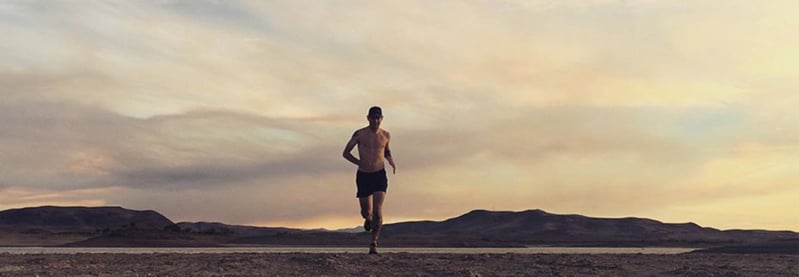
How to transition from the flat to off-road
Gediminas Grinius was a road runner from Lithuania – a country without mountains. In a short time, the father of two has become a formidable competitor in the international ultra trail running scene.
Not only did he win the 125 km Trangrancanaria Ultra Race, the 35-year-old broke the race speed record set by fellow Suunto ambassador Ryan Sandes. Most recently he placed fourth at the Western States 100-Mile Endurance Run.
Not bad going for a guy who lives 500 km away from the nearest mountain range. Below, he shares six things that helped him make the leap from road to trail.
Gediminas traveled to the USA two weeks before the Western States 100-Mile Endurance Run to train. © Gediminas Grinius
1. Patience is a virtue
You must be patient. The first two or three years I felt unnatural and really didn't know anything about trail running. It was quite difficult. For example, when you run on the flat your stride is quite different than technical downhill running. You must be patient because learning new things takes time.
2. Hit the gym
Over winter I was in the gym doing all kinds of things to keep my legs in shape. For example, I’ve been doing a lot of squats and step box training, which imitates power hiking.
Want to become a better runner? Then click here to check out Suunto's How do I Run? contest!
3. Make friends with a hill, any hill
There’s one hill near where I live and it’s only 70 m high, but I’ve used it to do hill repetitions, usually 20 or 30 times up and down. It helped me to handle the mountains in the Trangrancanaria race.
He spent time training on the shores of Lake Tahoe. © Gediminas Grinius 4. Avoid injury
When you're doing a lot of training you have to be careful to listen to your body to avoid getting injured. Over the last five years I haven't had any serious injuries so I've been able to sustain my training level and increase it. This has helped me to become a stronger runner.
5. Be prepared to travel
If you want to run in the mountains, then you must spend a lot of time in the mountains. The more time you spend in the mountains on technical trails the better you become. It’s 500 km and a five-hour drive from where I live to the nearest mountains. I usually choose to train in a place which is in the south of Poland and that's 10 hours driving from where I live. I try to do it as often as possible.
6. Take up yoga
Sometimes when you're running in the mountains it becomes stressful. But yoga has taught me how to relax my mind. Sometimes even when I have pain or some other issue, what I’ve learned through yoga has helped me to relax.

HOW TO USE AMBIT3’S RECOVERY FEATURES
To help you balance your training Suunto Ambit3 has two recovery indicators: recovery time and recovery status. Read on and learn how to take advantage of these features.
RECOVERY TIME
Recovery time is an estimate of how long your body needs to recuperate after training. The time is based on the duration and intensity of the session, as well as the overall fatigue, accumulating even at lower intensities. Recovery time accumulates from one session to the next, if you train again before the time has expired. A graph of your recovery time is displayed as one of the screens in the time mode. When entering the logbook, the recovery time in hours is displayed on the screen.
There is one important point to remember: the time is an estimate that is based on activities you have done with your Ambit3. It doesn’t have information about other aspects of life. Did you sleep enough? Do you have flu? Was your meal nutritious and helpful for your recovery?
To get an accurate indication of your actual recovery state, we recommend using one of the two recovery tests.
REVOVERY STATUS
Recovery status indicates the amount of stress on your autonomic nervous system. The less stress you have, the more recovered you are. Knowing your state of recovery helps you optimize your training and avoid over training or injury.
You can check your recovery status with a quick recovery test or sleep recovery test, powered by Firstbeat. The tests require a Bluetooth-compatible heart rate sensor that measures heart rate variability (R-R interval), such as Suunto Smart Sensor.
Your recovery status is indicated with 0-100% result scale.
Result & Explanation
81-100 Fully recovered. OK to train up to very hard intensity.51-80 Recovered. OK to train up to hard intensity.21–50 Recovering. Train easy.0-20 Not recovered. Rest to recover.
The more serious you are with training and the more tests you do, the more important details are, also in the test results. For a top-level athlete a difference of five points in recovery status may be meaningful where as an active runner will be happy with the four point scale presented above.
When entering the logbook, recovery is displayed as your estimated recovery time; if a recovery test is done within the past 24 h and after your previous move, the display will show the result of the last test. This assuming the recovery has been calibrated (see next chapter).
CALIBRATING THE TESTS
When you first start using Ambit3’s recovery tests the watch needs to be calibrated in order to provide accurate, personal results. The calibration tests define what 'fully recovered' means for your body. With each calibration test, your watch adjusts the results scale of the test to match your unique heart rate variability.
You need to perform three calibration tests for both sleep recovery and quick recovery tests. The calibration tests do not need to be done in sequence, but they need to be at least 12 hours apart. These need to be done when you have no accumulated recovery time. Ideally, you also feel fully recovered and are not ill or stressed during these calibration tests.
During the calibration period, you may get results that are higher or lower than expected. These results are indicated in the watch as your estimated recovery status until the calibration is completed. Once you have completed the calibration, the latest result is displayed when you enter the logbook instead of recovery time.
SLEEP RECOVERY TEST
The sleep recovery test, powered by Firstbeat, provides a reliable indicator of your recovery status after a night's sleep.
To perform a sleep recovery test:
Put on your heart rate belt and ensure the electrodes are moist.
Press [Start Stop], scroll to RECOVERY with [Start Stop], and select with [Next].
Scroll to SLEEP TEST and select with [Next].
If you want to cancel the test, press [Back Lap].
When you are ready to get up in the morning, end the test by pressing [Start Stop] or [Next].
The sleep recovery test requires at least two hours of good heart rate data to produce results. The test does not take into account the length of the night meaning you can get similar results after a six-hour sleep and an eight-hour sleep.
If you use your Ambit3’s alarm function, set the alarm first and then start the test. And in the morning stop both your alarm and your sleep recovery test.
During the test you will see the time and SLEEP TEST on the bottom row of the screen.
And last but not least: don’t worry if you have to get up in the middle of the night. This doesn’t make your test unreliable. The test selects the best two-hour period of your sleep and analyzes that.
QUICK RECOVERY TEST
The quick recovery test, powered by Firstbeat, is alternative way to measure your recovery status. The sleep recovery test is a more accurate method to measure your recovery status. But for some individuals, wearing a heart rate sensor throughout the night may not be feasible.
The quick recovery test only takes a few minutes. For best results, you should lie down, stay relaxed, and not move around during the test. We recommend performing the test in the morning after waking up. This helps ensure you get comparable results day to day.
To perform a quick recovery test:
Put on your heart rate belt and ensure the electrodes are moist.
Lie down and relax in a quiet environment free from disturbances.
Press [Start Stop], scroll to RECOVERY with [Start Stop], and select with [Next].
Scroll to Quick test and select with [Next].
Wait for the test to complete.
When the test is complete, scroll through the results with [Next] and [Back Lap].
TROUBLE SHOOTING THE RECOVERY TESTS
There are basically two reason for the tests to fail:
Bad skin contact or low HR belt battery will generate bad data and the test will fail.
If you are too stressed for the test, like right after a training session, the test is likely to fail.
The results of the tests do not impact your estimated recovery time.
Read more about the feature in Firstbeat’s scientific white papers:
Recovery Analysis for Athletic Training Based on Heart Rate Variability
Stress and Recovery Analysis Method Based on 24-hour Heart Rate Variability
Read more Tutorial Tuesday articles at tutorialtuesday
Get support for your Suunto product and find user manuals at support
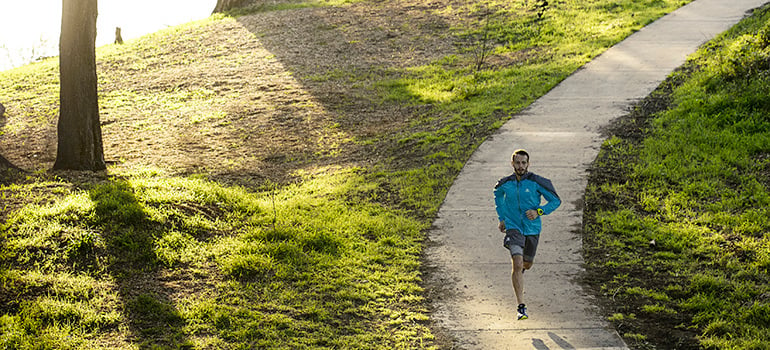
HOW TO USE AMBIT3’S RUNNING PERFORMANCE LEVEL
During a single run the running performance level has two benefits: Following the real-time difference indicator provides detailed, granular information on your daily performance and fatigue during the run. Endurance runners can use this information to learn how much fatigue seems manageable during long intensive runs. During races, this information helps you pace yourself properly.
After each run your Running performance level will be updated and you can track progress. If you are new to running or just haven't been out for a while, your running performance may be quite low at first. But as your physical fitness and running technique improve, you should see a corresponding increase in running performance.
DURING A RUN
Your Suunto Ambit3 compares your run with your current running performance level and provides real-time running performance feedback during your run. The real-time feedback is available as a graph display in Ambit3’s default Running sport mode. You can add this graph to any sport mode that uses the running activity type. The real-time difference (see below) can also be used as a data field in your custom running sport modes.
During your run, the graph display shows your four data points, as illustrated below.
1. Baseline: This is your current performance level that is calibrated to compensate for external variables such as terrain and to wait for your heart rate to stabilize. This calibration is done during the first minutes of your run.2. Real-time level: this is your real-time running performance level for the current run displayed per kilometer/mile. 3. Real-time difference: this shows you the real-time difference between the calibrated running performance baseline and your real-time running performance level for the current run. 4. Distance: total distance for the current recording. The graph shows the last six kilometers (~4 miles).
Illustrated below are three samples of Running performance levels during runs. In the first graph (1), performance is good. In the second (2), performance is bad and may indicate over training, illness, or just generally bad conditions. In the third graph (3), you see a typical long distance run where performance level drops steadily later in the run, indicate onset of fatigue.
AFTER A RUN
In the log summary at the end of your run, you get a new running performance level that is based on your last four to eight runs.
In addition, you can see your 30-day trend by pushing [Next]. The trend graph can also be viewed in Ambit3’s activity monitoring display after the first run is recorded.
Running performance around 20 is considered very low and above 60 to 70 very high. Average Running performance level for 40 to 50 year old males is around 35–40 and for females 30–35.
Over a 4–20 week period, you may see an increase in running performance level up to 20%. If your Running performance level is already good, it is difficult to improve further. In this situation, running performance level is better used as an endurance indicator.
RUNNING PERFORMANCE AND VO2MAX
Running performance level uses an estimation of your VO2max, a global standard for aerobic fitness and endurance performance. V02max indicates your body’s maximal capability to transport and utilize oxygen (ml/kg/min).
V02max is affected by the condition of your heart, lungs, circulatory system, and the ability of your muscles to utilize oxygen in energy production. VO2max is the most important single denominator of endurance performance of an athlete.
At optimum running efficiency, your Running performance level corresponds to your real VO2max (ml/kg/min).
Read more about the feature in Firstbeat’s scientific white paper:
Automated Fitness Level (VO2max) Estimation with Heart Rate and Speed Data
Read more Tutorial Tuesday articles at tutorialtuesday
Get support for your Suunto product and find user manuals at support










































































